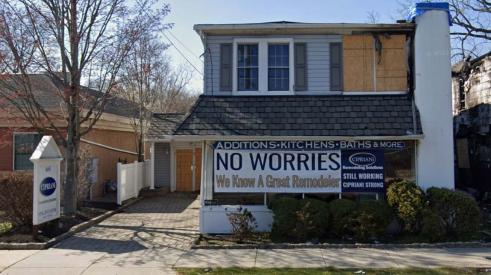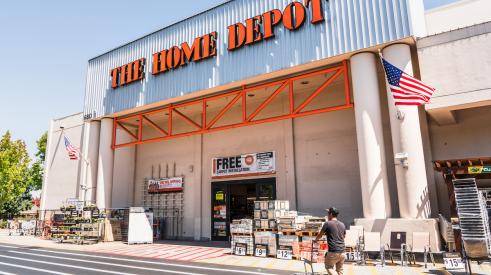Home prices continued to show solid growth in most of the country due to limited inventory conditions, but rising prices and severe winter weather caused existing-home sales to slip in February, according to the National Association of Realtors.
Total existing-home sales, which are completed transactions that include single-family homes, townhomes, condominiums and co-ops, declined 0.4 percent to a seasonally adjusted annual rate of 4.60 million in February from 4.62 million in January, and 7.1 percent below the 4.95 million-unit level in February 2013. February’s pace of sales was the lowest since July 2012, when it stood at 4.59 million.
Lawrence Yun, NAR chief economist, said conditions in February were largely unchanged from January. “We had ongoing unusual weather disruptions across much of the country last month, with the continuing frictions of constrained inventory, restrictive mortgage lending standards and housing affordability less favorable than a year ago,” he said. “Some transactions are simply being delayed, so there should be some improvement in the months ahead. With an expected pickup in job creation, home sales should trend up modestly over the course of the year.”
The median existing-home price for all housing types in February was $189,000, which is 9.1 percent above February 2013. “Price gains have translated into an additional $4 trillion of housing wealth recovery over the past three years,” Yun added.
Distressed homes--foreclosures and short sales--accounted for 16 percent of February sales, compared with 15 percent in January and 25 percent in February 2013.
Eleven percent of February sales were foreclosures, and 5 percent were short sales. Foreclosures sold for an average discount of 16 percent below market value in February, while short sales were discounted 11 percent.
Total housing inventory at the end of February rose 6.4 percent to 2.00 million existing homes available for sale, which represents a 5.2-month supply at the current sales pace, up from 4.9 months in January. Unsold inventory is 5.3 percent above a year ago, when there was a 4.6-month supply.
The median time on market for all homes was 62 days in February, down from 67 days in January and 74 days on market in February 2013. Short sales were on the market for a median of 94 days in February, while foreclosures typically sold in 60 days and non-distressed homes took 61 days. Thirty-four percent of homes sold in February were on the market for less than a month.
According to Freddie Mac, the national average commitment rate for a 30-year, conventional, fixed-rate mortgage declined to 4.30 percent in February from 4.43 percent in January; the rate was 3.53 percent in February 2013.
First-time buyers accounted for 28 percent of purchases in February, up from 26 percent in January, but down from 30 percent in February 2013.
NAR President Steve Brown, co-owner of Irongate, Inc., Realtors in Dayton, Ohio, said student debt appears to be a factor in the weak level of first-time buyers. “The biggest problems for first-time buyers are tight credit and limited inventory in the lower price ranges,” he said. “However, 20 percent of buyers under the age of 33, the prime group of first-time buyers, delayed their purchase because of outstanding debt. In our recent consumer survey, 56 percent of younger buyers who took longer to save for a downpayment identified student debt as the biggest obstacle.”
Brown notes the survey results are for recent homebuyers. “It’s clear there are other people who would like to buy a home that are not in the market because of debt issues, so we can expect a lingering impact of delayed home buying,” Brown added.
All-cash sales comprised 35 percent of transactions in February, up from 33 percent in January and 32 percent in February 2013. Individual investors, who account for many cash sales, purchased 21 percent of homes in February, compared with 20 percent in January; they were 22 percent in February 2013. Seventy-three percent of investors paid cash in February.
Single-family home sales edged down 0.2 percent to a seasonally adjusted annual rate of 4.04 million in February from 4.05 million in January, and are 6.9 percent below the 4.34 million-unit level in February 2013. The median existing single-family home price was $189,200 in February, up 9.0 percent from a year ago.
Existing condominium and co-op sales declined 1.8 percent to an annual rate of 560,000 units in February from 570,000 in January, and are 8.2 percent below a year ago. The median existing condo price was $187,900 in February, which is 9.8 percent above February 2013.
Regionally, existing-home sales in the Northeast fell 11.3 percent to an annual rate of 550,000 in February, and are 12.7 percent below February 2013. The median price in the Northeast was $237,800, up 1.5 percent from a year ago.
Existing-home sales in the Midwest declined 3.8 percent in February to a pace of 1.00 million, and are 12.3 percent below a year ago. The median price in the Midwest was $140,900, which is 8.6 percent higher than February 2013.
In the South, existing-home sales rose 1.5 percent to an annual level of 1.98 million in January, but are 0.5 percent below February 2013. The median price in the South was $163,400, up 8.3 percent from a year ago.
Existing-home sales in the West rose 5.9 percent to a pace of 1.07 million in February, but are 10.1 percent below a year ago. The median price in the West was $279,400, up 18.0 percent from February 2013. PR
Related Stories
4 Steps to Prep Your Business for Contraction
How a remodeling company plans ahead for the worst of times (and the best of times)
Creating a Company Fire Drill: How to Prepare for the Worst
A disastrous fire could have been a lot worse if the business wasn’t prepared for the unexpected
The Fundamentals of Growing Profitably
On this episode of Women at WIRC podcast, Nip Tuck Remodeling Owner April Bettinger shares how she plans for her company's profitable growth
3 Things to Add to Your Construction Contract—From a Lawyer
Did you know you can add these three elements to your contracts?
Study Finds Remodelers’ Net Profits Declined
How far did net profits decline and what's influencing the drop?
The Home Depot Bets on Pros Amid Predictions of Flat Sales Growth
For the first time since 2019, The Home Depot’s revenue fell short of Wall Street’s predictions amid a general softening in the home improvement market
Indicators of a Softening Market and How to Prepare
Market conditions could be changing, but don't panic. Richardson shares ways to stay on top of market conditions and how to prepare for any potential softening down the road.
Grow Your Business Through Collaboration with Remodeling Peers
Remodeling Mastery Forums offers a unique business opportuniy for remodelers













